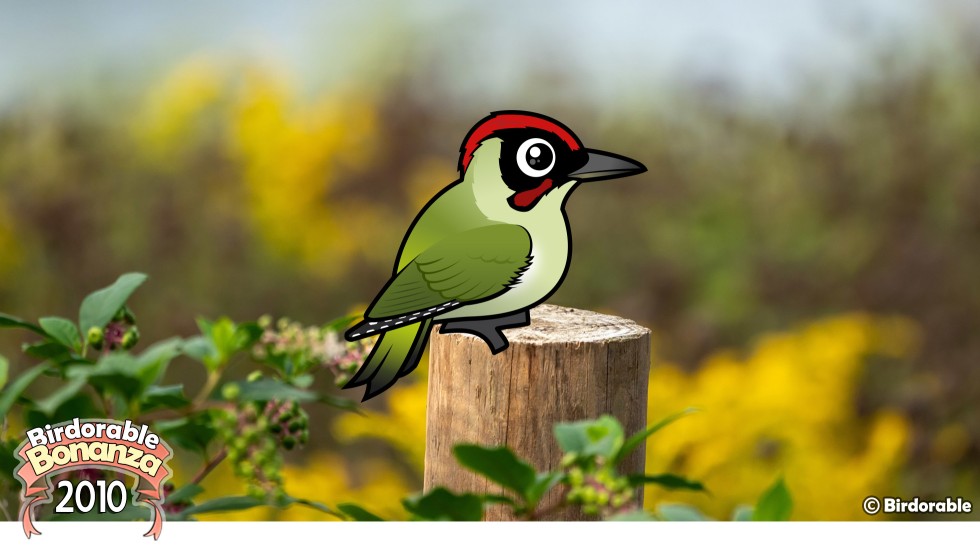2010 Bonanza Bird #2
Meet the Avian Anteater: The Birdorable Green Woodpecker

Meet the Green Woodpecker, the avian equivalent of an anteater, and the second star of our Birdorable Bonanza 2010. This vibrant bird, with its striking green plumage, offers a fascinating glimpse into the adaptability and ecological niche that birds can occupy.
Green Woodpeckers are a spectacle of nature, primarily found frolicking across the landscapes of Europe and parts of western Asia. Their presence is notably significant in countries like France, Spain, and Germany, where they contribute to over half of their global population. What sets these birds apart is not just their vivid coloration but their unusual feeding habits.
Unlike their wood-boring cousins, Green Woodpeckers have carved out a niche that involves foraging for their food on the ground. Their diet is remarkably specialized, focusing almost exclusively on ants. This peculiar choice of sustenance has earned them the nickname "avian anteaters." They use their long, sticky tongues to probe into ant colonies, extracting their prey with precision. This diet is not only a testament to their adaptability but also highlights the intricate relationships within ecosystems, where every species plays a role in maintaining the balance.

Male Green Woodpecker by hedera.baltica (CC BY-SA 2.0 DEED)
The Green Woodpecker's approach to life is a departure from the typical woodpecker behavior. Most woodpeckers are known for their characteristic pecking on tree trunks, a behavior that serves multiple purposes, including foraging for insects, creating nesting sites, and communicating with other woodpeckers. However, the Green Woodpecker spends a significant amount of its time on the ground, its bright green plumage blending seamlessly with the grass, as it hunts for ants.
Observing a Green Woodpecker in its natural habitat is a treat for birdwatchers. Their vibrant plumage, combined with their distinctive laughing call, adds a layer of charm to the forests and woodlands they inhabit. The sight of a Green Woodpecker diligently foraging on the ground, undeterred by the presence of onlookers, is a reminder of the diversity and adaptability of bird life.
Tomorrow, we turn our attention to a beautiful little yellow bird that breeds in cavities in North America. Can you guess what it will be?














Comments
Leave a comment
Thank you!